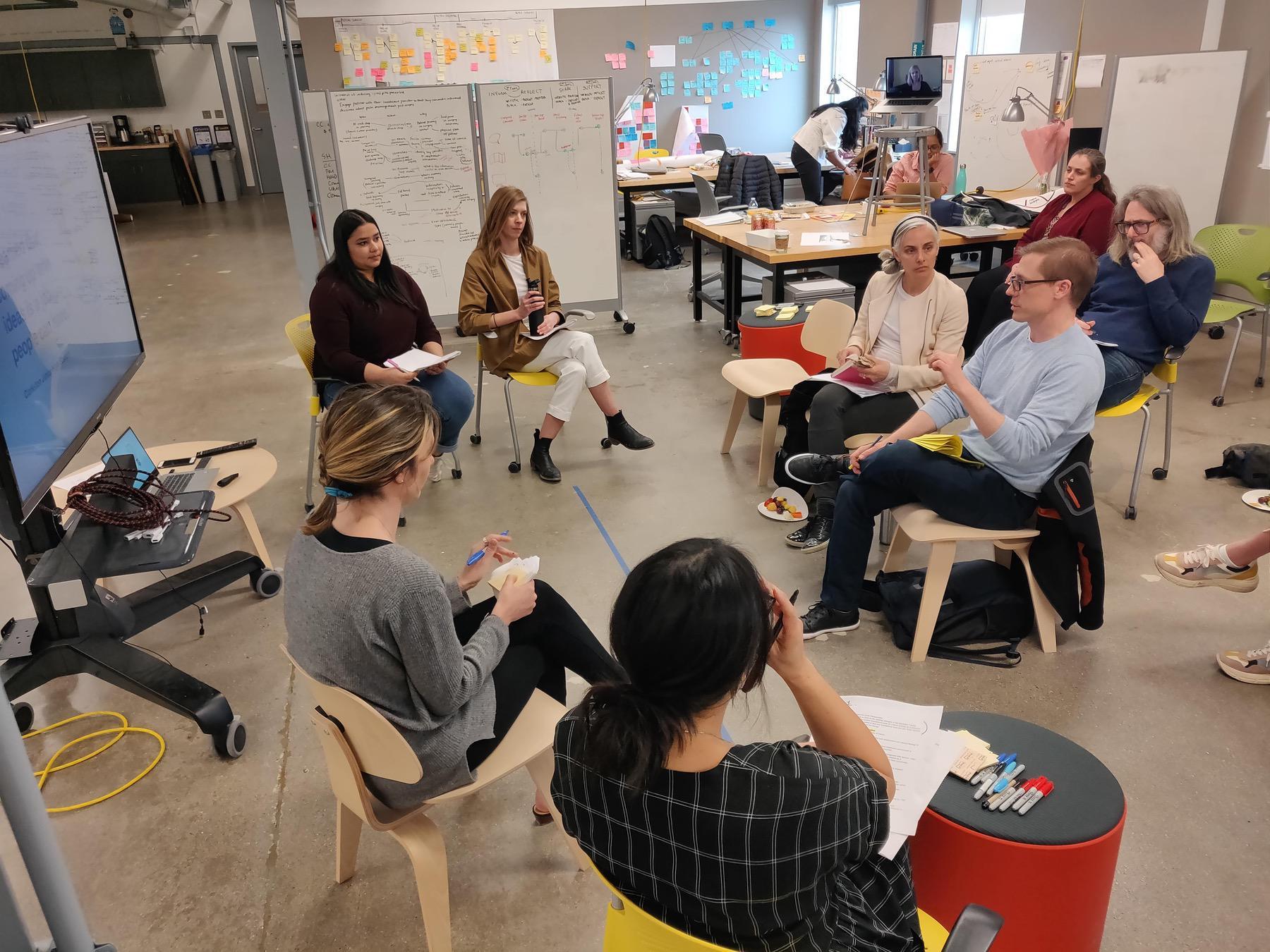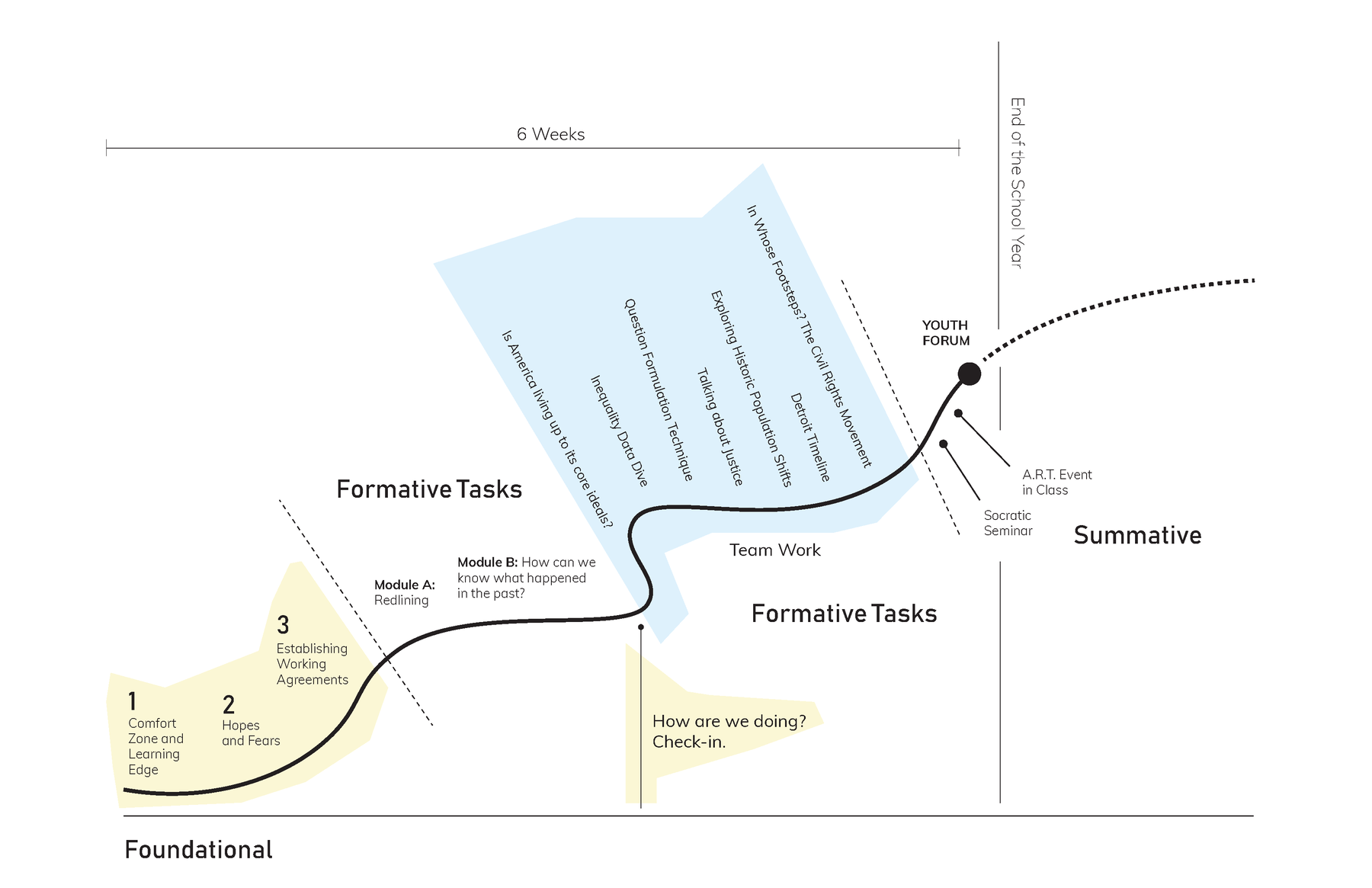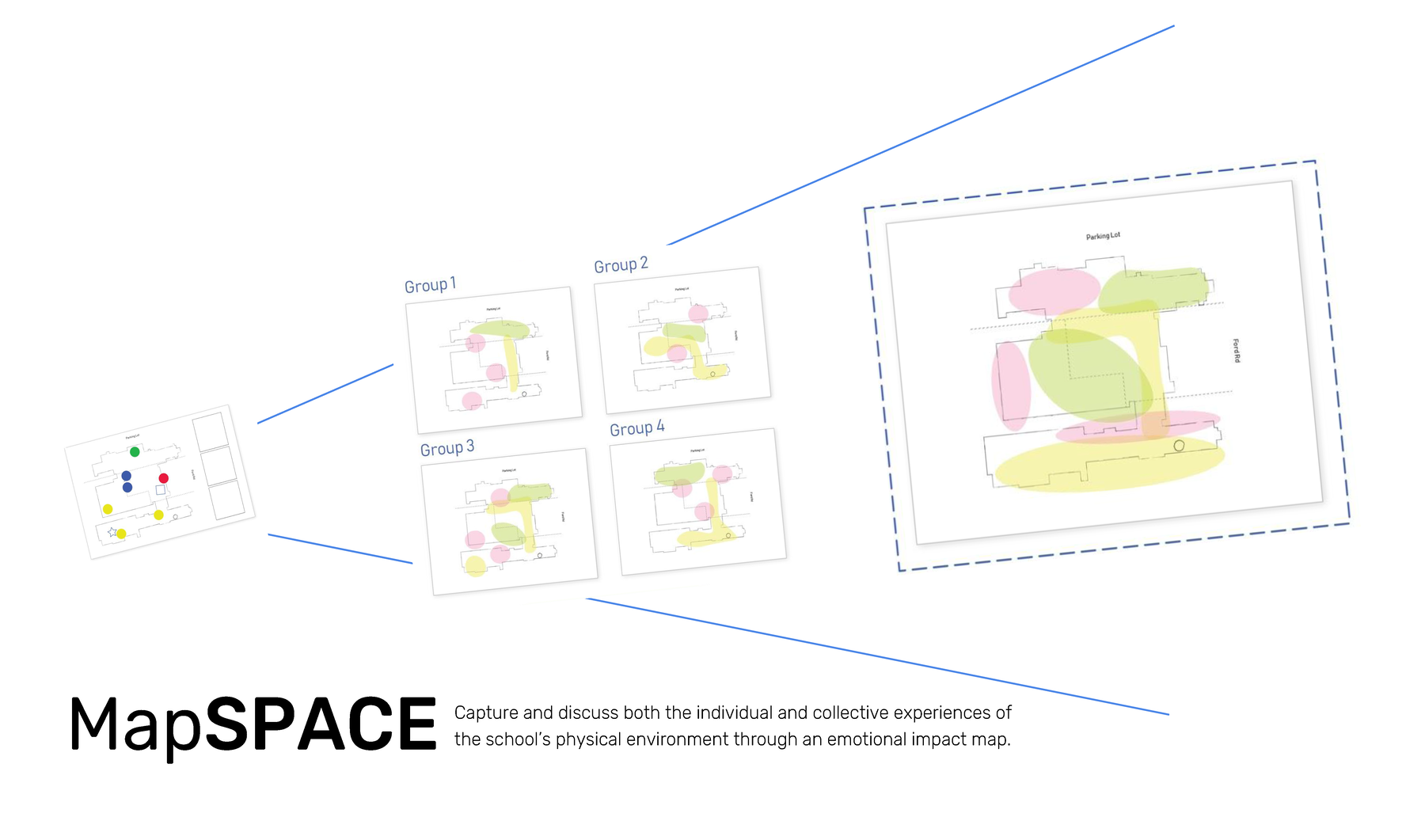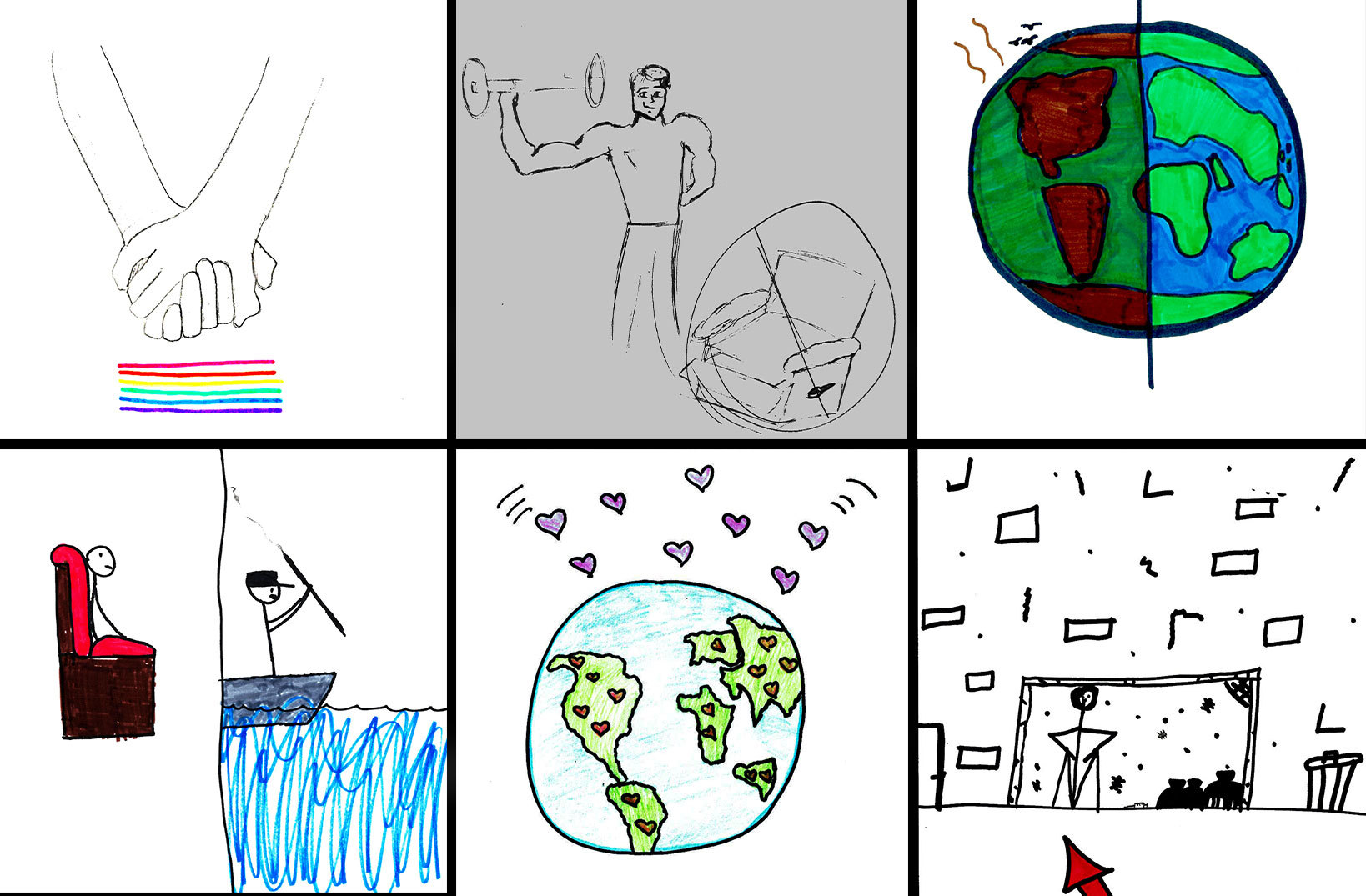Designing for Equity in Public Education
During the winter 2019 semester, graduate students from the Stamps School of Art & Design’s Masters in Integrative Design (MDes) worked with the University of Michigan School of Education’s Center for Education Design, Evaluation, and Research (CEDER) to address equity and access in public education as part of their Design Studio 2 prototyping course.
Working both collectively and in teams, the students worked with Darin Stockdill, design coordinator for the University of Michigan School of Education’s Center for Education Design, Evaluation, and Research (CEDER), to identify areas of opportunity and potential partners through Equitable Futures, a curricular initiative co-organized by Oakland Schools that aims to help teachers discuss social issues in U.S. history classes with greater depth and relevance.

“I had high expectations after meeting the MDes team, but I didn’t know exactly what to expect,” Stockdill said. “Through this process, I got a better understanding of designing systems from a human-centered perspective.”
Through conversations with schools and educators, the MDes students worked to prototype and test design solutions to address specific challenges.
To start, the MDes students worked as a group to help Brandon Moss, a high school teacher at Arts Academy in the Woods in Frasier, Michigan, explore new ways to communicate the content of his social studies curriculum through interactive methods. The MDes students lead a zine-making workshop to help Arts Academy students explore the future of civics using a low-resource method with roots in activist history.

Colleen Clark (MDes ‘20) and Jennifer Low (MDes ‘20) followed this preliminary work with a project at Fordson High School in Dearborn, Michigan. Here, Clark and Low sought to help Angela Altomonte, a Fordson social studies teacher, explore concepts of belonging and equity with her students. To create deep, actionable meaning around the civil rights curriculum, Altomonte felt it was important to lay a foundation of trust, community, and inclusion in her classroom.
Through a series of workshops, Low and Clark developed a map with Fordson students, visualizing emotional “hot spots” where students felt safe to be themselves at school and in the spaces between home and school. They also conducted an exercise with the students to encourage the re-arrangement of classroom furniture in different configurations, noting how each encouraged or discouraged collaborative, inclusive learning.

“By addressing the physical spaces of the student’s built environment, we felt that we could create the welcoming physiological space that Altomonte’s foundational work required,” Low said.
The second group of MDes students, Gowri Saini Balasubramaniam (MDes '20) and Megan Freund (MDes '20) designed and facilitated workshops to engage junior high school students at Clarkston Junior High School in Clarkston, Michigan, in designing internet campaigns to radically imagine the future of the "common good.”

According to Balasubramaniam, the workshop was very intentional in ensuring the outcome resulted in online advertising campaigns. "The use of internet advertising campaigns aims to subvert the hyper-personalized and persuasive messaging students are subject to online via targeted ads," Balasubramaniam said. "We hope that these internet campaigns will have a wider reach to further motivate students' continued participation in advocating for what they believe in."
According to Stockdill, working with designers introduced fresh skill-sets into lesson planning, bringing new learning tools into the mix that encouraged students to think about how the study of spaces and marketing tactics play a role in creating social change. Additionally, the MDes students’ iterative approach to designing pilot curricula on a short time table was also appreciated.
Perhaps one of the most important ideas that surfaced from MDes’ work with Equitable Futures are new methods for inviting students to be more active in creating their own educational experiences — as opposed to strictly being recipients of it.
“In many ways, the task of educating is framed in terms of content delivery. Students are the subject,” Stockdill said. “Through design approaches, educators have new ways to work with them as participants and collaborators. Schools and institutions aren’t structured to do these sort of explorations, but designers can see different opportunities.”